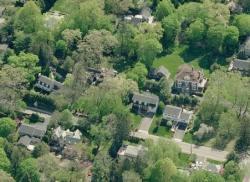Jill Haskel Passes Away at Age 89
- Details
- Written by: Joanne Wallenstein
- Hits: 1957
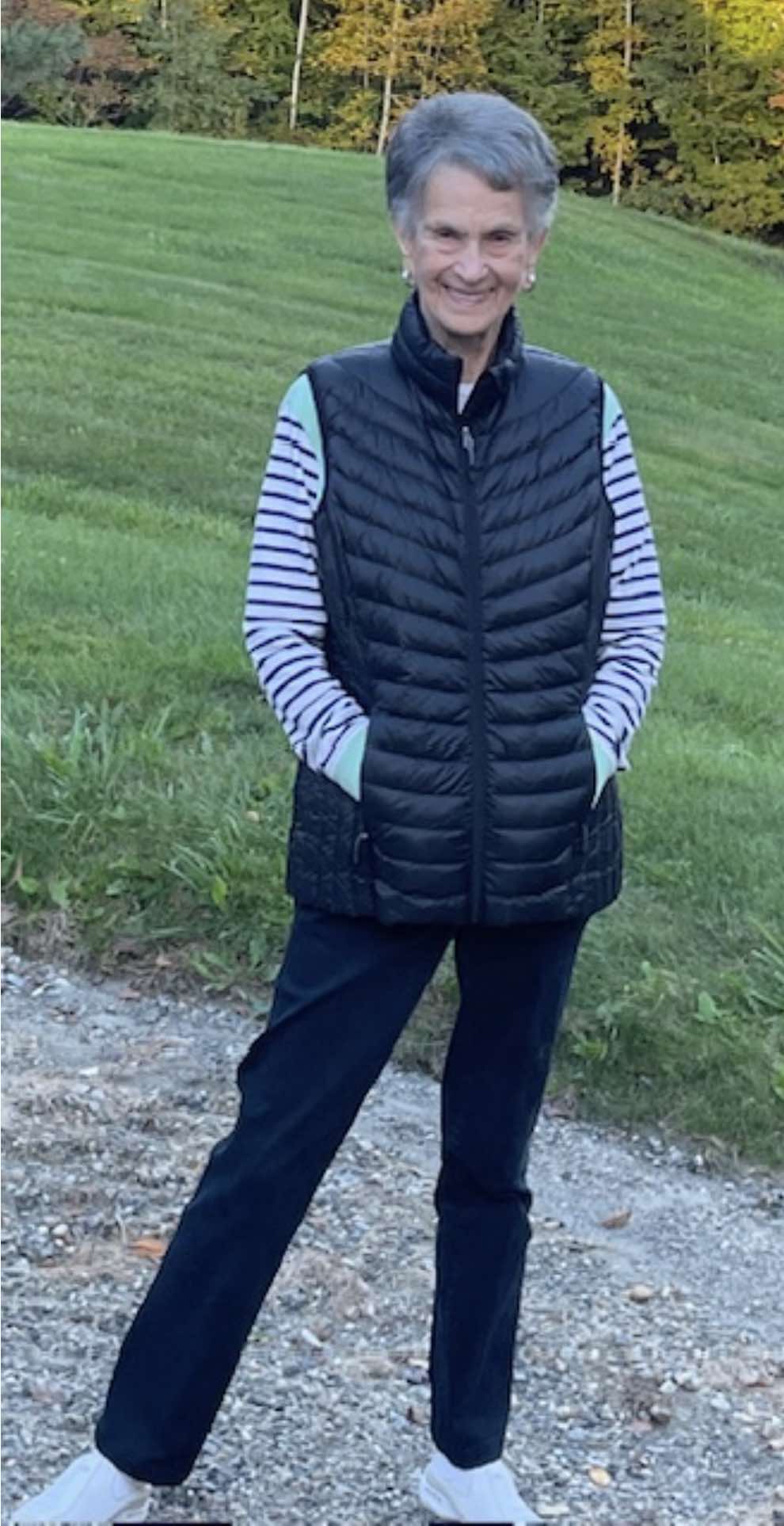 Jill Newmark Haskel, born August 15, 1936, died suddenly on Monday, December 22, 2025. She was 89 years old.
Jill Newmark Haskel, born August 15, 1936, died suddenly on Monday, December 22, 2025. She was 89 years old.
Jill was born in Los Angeles, California as an only child to parents Richard and Jane Newmark. She graduated from Hollywood High School in Los Angeles and later from Tobe-Coburn School for Fashion (in more recent times was known as Wood Tobe-Coburn School in Manhattan). In 1958, she married Merwin R. Haskel, Jr.
Jill and Merwin raised their four sons—Brad, Bill, and twins, Jim and Tony—in Scarsdale, NY, where they were active members of their neighborhood and community. Jill was a dedicated mother, later becoming a loving mother-in-law to Amy (Bill) and Annie (Jim), and a proud grandmother to six grandchildren: Jake, Tommy, Jenny, Tess, Sam, and Eli. She was a cherished sister-in-law to Richard and Jane Haskel and Aunt to Patricia Freund, and Whit (and Lina) Haskel and their children Sofia, Sebastian, Lilith and Oliver.
Jill and Merwin shared nearly sixty wonderful years of marriage together, making their homes in Scarsdale, Hartsdale, and White Plains, as well as their beloved Stratton, Vermont. When Merwin passed away in 2017, Jill was faithfully by his side throughout his long and courageous battle with Alzheimer’s disease. A devoted family member and friend, Jill stayed in close touch with those she loved—always texting, calling, and checking in. She had a gift for connecting with people of all ages and backgrounds, leaving every community she joined better off. In her later years, Jill lived at The Osborn Senior Living Community in Rye, New York, where she became more active than ever. She filled her days with a wide range of activities—from regular trips to New York City for the Philharmonic and Broadway shows to attending her favorite Zumba classes. Her more than forty years of volunteer service at White Plains Hospital, along with a decade of work with the Alzheimer’s Association, reflected her deep compassion and unwavering commitment to others.
After her passing, countless friends have reached out to the family, sharing stories and fond memories that spoke to Jill’s kindness, compassion, and unwavering determination to help others. Though her loss is deeply felt, the legacy she leaves behind—and the example she set through her generosity and warmth—will continue to inspire generations to come.
Details regarding the celebration of Jill's life will be forthcoming. In lieu of flowers, donations can be made in her honor to White Plains Hospital, or the Alzheimer’s Association of Westchester.
New Rochelle Police Rescue Teenager Stranded on Rocks at Davenport Park
- Details
- Written by: Joanne Wallenstein
- Hits: 801
 On December 14, 2025, at approximately 5:15 p.m., New Rochelle Police received an urgent 911 call reporting that a 17-year-old male had slipped and fallen while on the rocks along the shoreline at Davenport Park.
On December 14, 2025, at approximately 5:15 p.m., New Rochelle Police received an urgent 911 call reporting that a 17-year-old male had slipped and fallen while on the rocks along the shoreline at Davenport Park.
The caller reported that the teenager had fallen near the water’s edge of the Long Island Sound but was not in the water and was unable to climb back up due to a minor back injury.
Officers from the New Rochelle Police Critical Incident Unit responded promptly, located the individual on the rocks near the water’s edge, and safely extracted him using rope rescue techniques. The teenager was brought back to land without further incident.
He was subsequently transported by ambulance to a local hospital for evaluation and treatment of his minor back injury.
The New Rochelle Police Department reminds the public to exercise extreme caution when near rocky shorelines, particularly during evening hours or in slippery conditions, as falls can occur quickly and rescue access can be difficult.
No further details about the individual’s identity will be released to protect privacy.
Chris Walsh Passes Away at 53
- Details
- Written by: Joanne Wallenstein
- Hits: 983
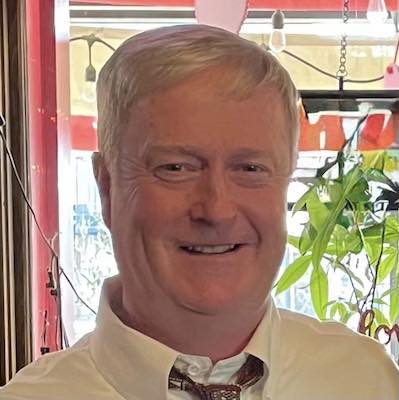 Christopher J Walsh, 53, of Bronxville, NY (formerly of Scarsdale and White Plains) died on December 7 after a brief illness, surrounded by family.
Christopher J Walsh, 53, of Bronxville, NY (formerly of Scarsdale and White Plains) died on December 7 after a brief illness, surrounded by family.
Chris was a devoted father, husband, brother, friend, and colleague. He is survived by Corinne, his wife of 28 years; his two sons, Christopher and James; and his siblings Kerry (Jerry), Tim (Kristine), Aileen (David), Meghan, and Maura; his nephews Patrick and Nicholas Walsh and his niece Julia Schast. He was preceded in death by his parents, Nora (Dowd) and John Walsh, and by Muffin, his treasured canine companion.
A second-generation graduate of Fordham University, Chris proudly watched his two sons follow in his footsteps. Chris loved playing golf with his family and friends, the occasional cigar, a good laugh, walks, being Irish, summer vacations with Corinne, watching soccer with Christopher, and Sunday football with James.
Chris was a devoted son. As the “local” adult child of six for many years, he was at the ready when his parents needed help. He calmly got them situated in emergencies and alerted the sibling troops to assemble. Even after Nora and John had died, Chris continued to look in on their friends.
Chris was often hilarious. He didn’t like to be the center of attention and would often rely on humor to shift focus from himself. Even when he blustered, those who knew him saw his kindness, generosity and deep affection. His family will miss him fiercely.
The family wishes to thank the wonderful nurses and doctors in the SICU at NY Presbyterian for their devoted and nearly miraculous care in recent weeks.
There will be Visitation at Immaculate Heart of Mary Church, 8 Carman Road, Scarsdale, NY at 10am on Monday, December 15th. The Funeral Mass will follow at 11am. In lieu of flowers, memorial donations may be made to the Sisters of Divine Compassion.
When Will a Food Market Open in Scarsdale?
- Details
- Written by: Joanne Wallenstein
- Hits: 3266
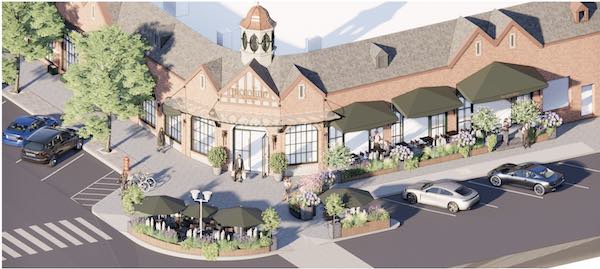 An aerial view of the plan for the new Piccolino market in Scarsdale.Another Thanksgiving is here, and there’s still no market in Scarsdale. The original DeCicco’s closed its doors just over a year ago, and the new DeCicco’s (same name, different owners) said they planned to open the new market, called Piccolino, by the end of 2025.
An aerial view of the plan for the new Piccolino market in Scarsdale.Another Thanksgiving is here, and there’s still no market in Scarsdale. The original DeCicco’s closed its doors just over a year ago, and the new DeCicco’s (same name, different owners) said they planned to open the new market, called Piccolino, by the end of 2025.
However, things were looking quiet so we stopped by DeCicco’s Eastchester location to get an update.
It turns out that a complete gut renovation of the site is underway – from the basement up. It’s taking longer than planned – and DeCicco’s is also in the process of constructing a store in Glenville – so that could be further slowing progress here in Scarsdale.
Joe DeCicco said they have concerns about the limited size of the parking lot in Scarsdale and hope to arrange additional parking for customers in the Village. They will also make it possible to order and pick up or use Instacart to speed the process in the store.
The question remains – when will we be able to buy a dozen eggs in Scarsdale instead of driving to White Plains, Eastchester or Central Avenue? As of now, they are targeting May, 2026.
Boys Volleyball Team Onto the State Playoffs
- Details
- Written by: Dave Taber
- Hits: 557
 Junior Griffin Lee (2) and Senior Jacob Kashanian (21) rise together for a block attempt.The Scarsdale High School Boys Volleyball Team faced Clarkstown South in the Division 1, Section 1 Championship on Thursday, November 13, at the Westchester County Center. The Raiders battled throughout the match — especially in the third set, where they held two set points — but the Vikings ultimately prevailed, winning 3–0 to claim the Section 1 title.
Junior Griffin Lee (2) and Senior Jacob Kashanian (21) rise together for a block attempt.The Scarsdale High School Boys Volleyball Team faced Clarkstown South in the Division 1, Section 1 Championship on Thursday, November 13, at the Westchester County Center. The Raiders battled throughout the match — especially in the third set, where they held two set points — but the Vikings ultimately prevailed, winning 3–0 to claim the Section 1 title.
The good news for Scarsdale is that the team received an at-large bid to the state playoffs, keeping their state title hopes alive. The Raiders next play on Saturday, November 22, at Roberts Wesleyan University in Rochester, NY.
Photos by Dave Taber of Shots of the Game
To see more game photos and/or download photos, please visit https://www.shotsofthegame.com/
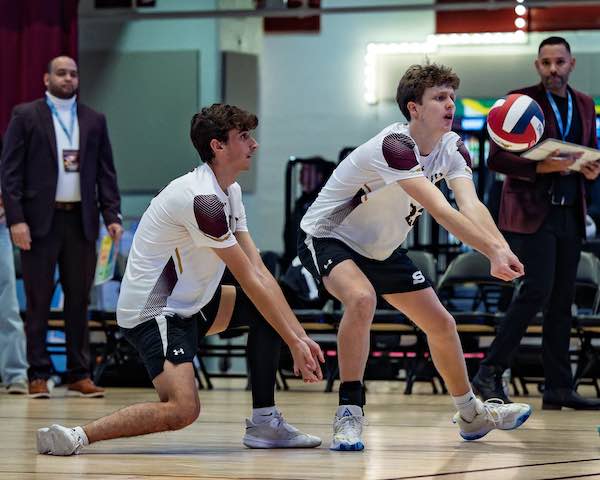 Ian DiLorenzo (22) focuses on his dig as Noah Kent (12) backs him up.
Ian DiLorenzo (22) focuses on his dig as Noah Kent (12) backs him up.
 Junior Ian DiLorenzo (22) drives a spike across the court.
Junior Ian DiLorenzo (22) drives a spike across the court.
 Senior Noah Kent (12) drops low for a clean dig.
Senior Noah Kent (12) drops low for a clean dig.
 Jacob Kashanian (21) celebrates after winning a big point.
Jacob Kashanian (21) celebrates after winning a big point.
 Griffin Lee (2) sends the ball back over the net to keep the rally alive.
Griffin Lee (2) sends the ball back over the net to keep the rally alive.
 Ian DiLorenzo (22) focuses on his dig as Noah Kent (12) backs him up.
Ian DiLorenzo (22) focuses on his dig as Noah Kent (12) backs him up.
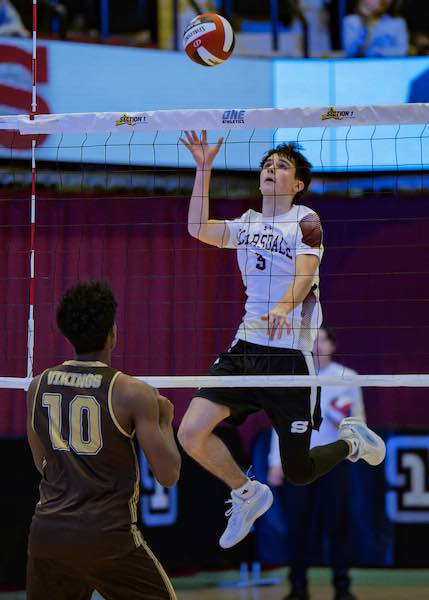 Senior Tristan Fourgoux (9) gets the ball back over to extend the play.
Senior Tristan Fourgoux (9) gets the ball back over to extend the play.
 Noah Kent (12) elevates for a sharp spike to win the point.
Noah Kent (12) elevates for a sharp spike to win the point.
 Ian DiLorenzo (22), Tristan Fourgoux (9), and Ryosuke Shindo (15) celebrate a big Scarsdale point.
Ian DiLorenzo (22), Tristan Fourgoux (9), and Ryosuke Shindo (15) celebrate a big Scarsdale point.
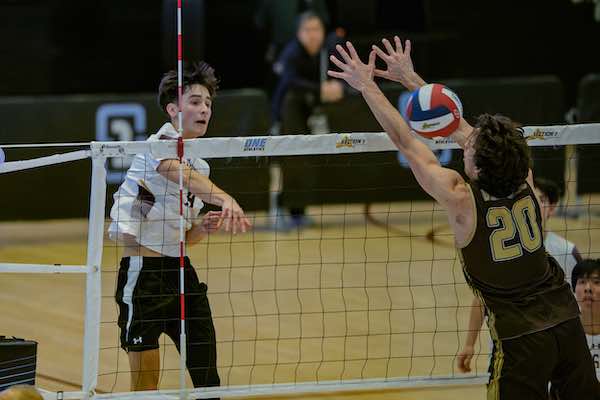 Tristan Fourgoux (9) attacks with a strong spike.
Tristan Fourgoux (9) attacks with a strong spike.
 Junior Ryosuke Shindo (15) sets the ball.
Junior Ryosuke Shindo (15) sets the ball.







